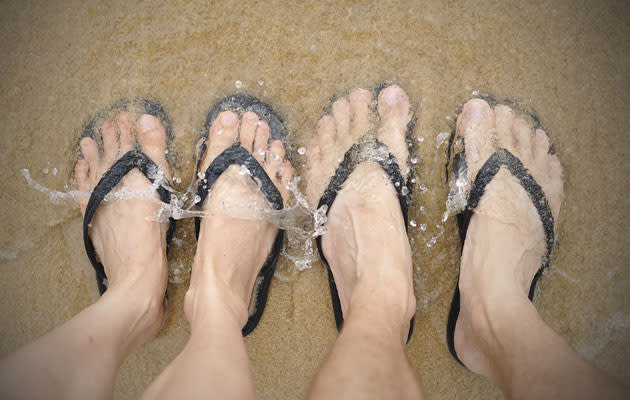 Fit to Post Health
Fit to Post Health1 in 5 Asians has flat feet issues

“Do I have flat feet?” is a common question asked by patients I see at SGH.
You’ve probably come across or heard about the terms “flat feet” or “pes planus” (to apply the correct medical terminology). These terms are often used by patients, shop assistants and health care professionals, but what do they mean?
Typically, in a non “flat-footed” individual, the arch of the foot is usually raised off the ground when the person is standing. If the foot arch is low or nonexistent, the person is said to have “flat feet” or sometimes, “fallen arches”.
Pes planus tends to be a very common condition in the Asian population with estimates suggesting that it occurs in around 1 in 5 individuals.
How do I know I have flat feet?
Flat feet can only be truly identified while the individual is standing or walking. When someone with flat feet stands or walks, their inner foot or arch flattens. In addition the foot may roll over to the inner side (this is known as excessive subtalar pronation).
Typically, the arches of children may not fully develop until the age of 10, therefore it can be difficult to assess whether they have a flat foot until this age.
Why do I have flat feet?
It’s often difficult to give a definitive answer to this question as there are a number of contributing factors. Often there are hereditary factors involved which may contribute to having certain weak/tight muscles or ligament laxity. Also, poor footwear can play a major part in developing flat feet. For example, shoes that limit toe movement, such as high heels, can lead to flat feet in adulthood.
Related article: High heels – What’s considered too high?
So if I have flat feet, does that mean that I’m going to get pain?
Contrary to popular belief, having a flat foot does not necessarily increase the incidence of injury and it does not usually cause problems.
However, flat feet may put a strain on your muscles, ligaments and joints, which may cause pain in your feet, legs, hips and back when you stand or walk. Furthermore, individuals with flat feet may develop tired or aching feet after prolonged periods of standing or walking.
Do I need treatment?
Treatment is only required if the flat foot is associated with pain in the foot or lower limb. If there isn’t any pain, treatment is not indicated simply as a result of having a flat foot. However, in severe cases, treatment may be warranted in order to prevent any possible future injuries.
Related article: Heel pain – What causes it and exercises to help relieve the pain
What treatments are available?
Like all health related issues, it’s important to recognise the problem as early as possible since its severity tends to worsen with time. Early treatments tend to be less invasive and are often associated with better outcomes than treatment at more advanced stages.
It is important to remember that there is no blanket treatment. Treatment would focus on specific aspects or parts of the foot that require modification or healing. This may be achieved in a number of ways. Often the first line of treatment is non-surgical.
Specific exercises such as calf stretching exercises, can be used in order to stretch and lengthen the Achilles tendon and posterior calf muscles, which can be involved in the development of a flat foot.
Insoles or orthotics may be used to correct the flat foot deformity or realign the foot and lower limbs. Your podiatrist or doctor can provide further details on appropriate Insoles or orthotics.
Surgery is usually only considered when the patient fails to respond to conservative measures (such as those above). Depending on the patient’s specific condition, possible surgical procedures may involve:
Lengthening of the Achilles tendon
Calcaneal osteotomy (surgical shifting of the heel bone), which may help to re-align the rearfoot
Reconstruction of specific tendons, such as the tibialis posterior tendon
FREE Doctor Q&A: Bunions, ingrown toe nails, plantar warts, corns and calluses... foot ailments can be more numerous than toes on both feet! Luckily, many of these conditions can be easily treated. This month (April 2014), take this opportunity to send us any question you have about foot problems. Our podiatrist is here to answer them for FREE!
Get more health tips at HealthXchange.com.sg and sign up for our FREE e-newsletter.
By Gerard Evans, Podiatrist, Podiatry Dept, Singapore General Hospital (SGH), a member of the SingHealth group, for HealthXchange.com.sg.
Health Xchange's articles are meant for informational purposes only and cannot replace professional surgical, medical or health advice, examination, diagnosis, or treatment.


